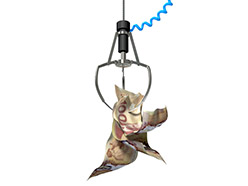
Retirement has a lot of benefits — more free time, trips around the world — but there are perks that some people love more than most: their Old Age Security (OAS) and Canada Pension Plan (CPP) benefits. These dollars often make the loss of employment income easier to stomach.
However, while CPP is guaranteed, OAS is not. “It’s a government gift,” says Daryl Diamond, a Winnipeg-based advisor with Diamond Retirement Planning. “That’s why they can take it back.”
A lot of retirees have heard the dreaded word — clawback — but many have no idea how it works. There are advisors who don’t quite get it either, says Diamond.
It’s simple: For every $1 of annual taxable income over $71,000, the government takes back 15 cents. If a client made more than $114,815 in 2014, that person would get nothing. Here’s an example from the Service Canada website.
The threshold for 2013 was $70,954.
If your income in 2013 was $80,000, then your repayment would be 15 percent of the difference between $80,000 and $70,954:
$80,000 – $70,954 = $9,046
$9,046 x 0.15 = $1,356.90
You would have to repay $1,356.90 for the July 2014 – June 2015 period.
(A retiree wouldn’t actually have to repay the money; the person just wouldn’t get it the next year. It’s also important to point out that the payment year is July to July.)
Anyone making less than $71,000 annually would have received $551.54 a month in 2014. That number is regularly adjusted for inflation.
While it’s always great to get government money, Diamond cautions advisors and clients not to get too greedy. If you’re trying to avoid the clawback at all costs, planning mistakes will get made.
“I don’t mean this with disrespect, but if someone has $90,000 in annual taxable income and they lose some of the benefit, then how much of an impact will it really have?” says Diamond. “At that level, they’ll be out about $155 after tax a month.”
One mistake people make is deferring their RRSP withdrawals until they turn 72 when they are forced to remove their money from their RRIF. “It bewilders me that advisors are still being taught to defer all registered money,” he says. “That leads to a tax trap.”
In that case, people may start receiving their OAS at 65 — it can’t be taken earlier than that — but when they start withdrawing from their registered account, their now-sizable income forces the clawback. It may make more sense to take money out of an RRSP earlier, but not so much that the client reaches the $71,000 threshold.
Yes, you won’t get the tax deferred compounding between the ages of 65 and 72, but you will get the government’s money.
The problem is that some advisors make too many short-term decisions and put too much emphasis on OAS. The goal should be to get it, but long-term planning should be paramount. If receiving payments comes at the expense of other planning, then skip it.
“People make a big deal out of it,” says Diamond. “I don’t think advisors think through the long term of how it will unfold for some people.”
If it is possible to create a plan where OAS payments can be received, then that should be done. It’s a present from the government, says Diamond, and it’s income that should be used first, perhaps over non-registered investments.
“It’s not tax efficient and it’s not flexible,” he says. “So try to use it.”